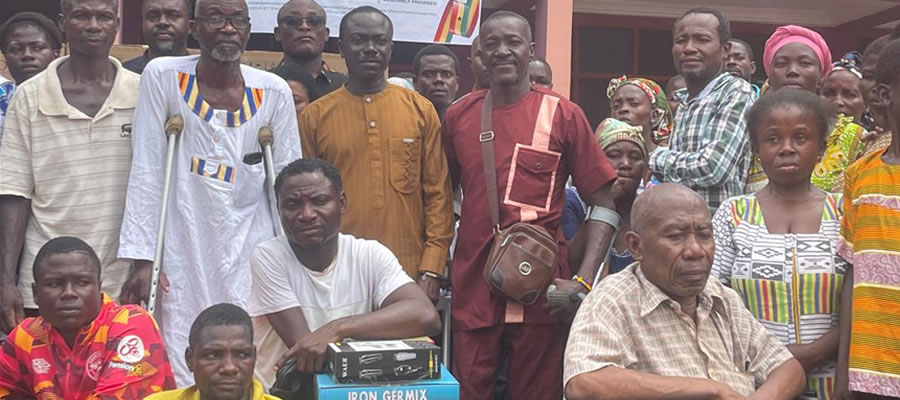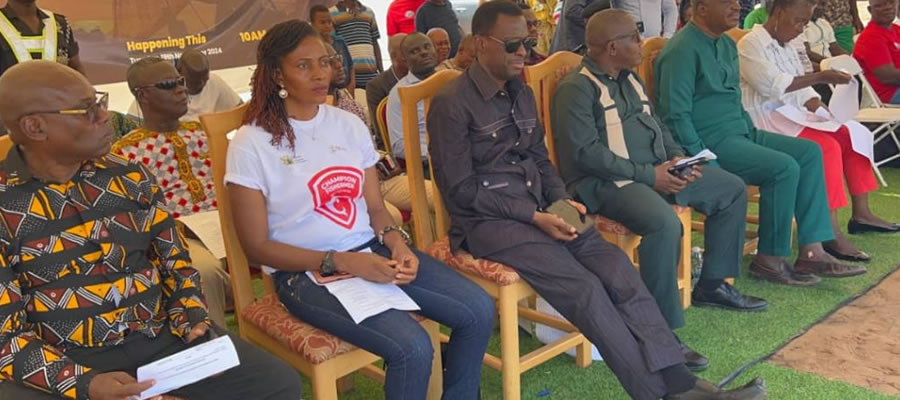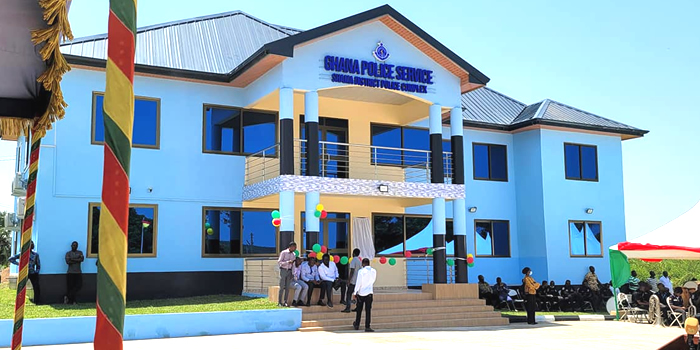

Housing Conditions
Introduction
The 2010 Population and Housing Census defines a household as consisting of “a person or group of persons living together in the same house or compound, sharing the same housekeeping arrangements and being catered for as one unit”. It covers those persons joined together in an arrangement to provide food, shelter, and other basic residential necessities. Each household has a head, recognised as such by members, who may or may not be the chief breadwinner. People in households have varied living arrangements, along cultural and ethnic lines and according to housing conditions.
Data was collected in the 2010 Population and Housing Census on housing Stock, conditions and facilities. The Census provided an official count of all structures (permanent and temporary) within the district. Among the issues covered were the number of occupied and unoccupied structures, the type of dwelling and the main materials used in their construction, occupancy status, and means of waste disposal, utilities and household facilities.
The information from the Census serve as a basis for planning housing and human settlement programmes and policies as well as evaluating and monitoring of housing conditions and needs of the population within the context of the Millennium Development Goal Seven (MDG7).
Housing Stock Table 8.1 shows the distribution of housing stock and households by rural and urban localities in the Shama District. The total household population in the District is 80,632 comprising 45,109 for urban and 35,523 for rural. The District has 14,217 houses and 19, 291 households.
The number of persons per house in the District is 5.8. This is relatively lower than both the regional average of 6.3 and national average of 7.3. The population per house for the urban areas (7.0) is relatively higher than that of the rural areas (4.7) as shown in Table 8.1.
The Table 8.1 further shows that, the average households per house is 1.4, a little lower than the national average of 1.6. This means that for every house in the Shama District there is approximately one household, whereas the regional average recorded an approximate figure of two households per house.
Again, the average household size in the district stands at 4.2. This is lower than the regional and national average household sizes of 4.3 and 4.5 respectively. Also, the average household sizes for urban and rural areas are 4.3 and 4.2 respectively.
Type of Dwelling, Holding and Tenancy Arrangements
The type of dwelling refers to housing type while holding and tenancy arrangement deals with condition of occupancy. Ownership status
Table 8.2 indicates ownership status of dwelling by sex of household heads and type of locality. The Table shows that majority (59.0%) of the dwellings are owned by a household member, followed by those owned by a relative not a household member (21.0%) and other private individual (18.1%). Public/Government ownership of houses constitutes 0.7 percent of the total houses in the District. Proportions of male headed households and female headed households of dwelling units owned by relatives who are not members of households are 18.9 percent and 24.2 percent respectively. Also, male and female heads of dwellings owned by other private individual constitute 19.5 percent and 16.1 percent in that order. Ownership of dwelling units by a household member in rural areas is relatively higher (67.5%) than urban areas (52.2%). On the other hand, dwelling units owned by a relative not a member of a household are occupied in urban areas (24.5%) more than the rural areas (16.6%). Similarly, proportion of households occupying dwelling units owned by other private individual in urban areas (21.3%) is relatively higher than the rural areas (14.2%).
Type of dwelling
Table 8.3 shows the type of dwelling occupied by households by type of locality and sex of household head. From the Table, compound houses (44.0%) are the main type of dwelling in the District, followed by separate houses (39.0%), semi-detached houses (9.4%) and flat/apartment (3.7%) in that order. The proportion of female headed households (46.7%) is slightly higher than male headed households (42.2%) living in compound houses, while 40.1 percent of male headed and 37.4 percent of female headed live in separate houses. In urban areas, 51.7 percent of households live in compound houses than 34.4 percent in rural areas, while more rural households (49.1%) live in separate houses than the rural households (31.1%). As expected, the proportion of dwellers in huts in rural areas (2.9%) is higher than in urban areas (1.1%).The proportion of persons in improvised homes/containers in urban areas (0.9%) is higher than in rural (0.1%) areas.
Construction Materials
This section looks at the type of materials that are used in constructing houses in the Shama District. There are two main construction materials for outer walls in the District; they are cement or concrete and Mud brick/earth. Other materials such as stone, metal sheets, bamboo raffia are hardly used in the construction of outer walls. The areas that were looked at are the outer wall, floor and roof.
Main construction material for outer wall
The main construction materials for outer walls are cement, concrete and mud brick/earth. Table 8.4 shows that cement blocks/concrete (71.2%) is the most common construction material for the outer wall of dwelling units. The next common construction material used is mud brick/earth which constitutes 24.8 percent of the materials used for outer walls.
The use of cement blocks/concrete is higher in urban areas (83.4%) than the rural areas (57.0%) while the use of mud brick/earth is higher in rural areas (38.7%) than urban areas (13.0%). The use of other materials for the construction of outer walls of dwellings in the District is only 0.2 percent.
Main construction material for the floor
Type of materials used for the floor of a house affects the appearance, quality and health status of occupants of a house (GSS, 2010).). As shown in Table 8.5, floors of houses in the District are mostly made of cement/concrete (91.4%), while a small proportion (5.4%) of households also use earth/mud. The use of cement/concrete for floors is higher in urban areas (92.6%) than rural areas (89.9%). Also, more rural households (7.8%) use Earth/mud for their floors than the urban households (3.5%). Vinyl tiles constitute 1.0 percent in the urban areas compared to 0.8 percent in the rural communities as construction materials for floors. The use of terrazzo/terrazzo tiles as construction material for the floor of dwelling units constitutes 0.7 percent in the urban areas, while proportion for the rural areas is 0.5 percent. On the whole, the use of other construction materials for floors of dwelling units in the District is less than 1.0 percent.
Main construction material for roofing
Table 8.6 presents data on main materials used for roofing in the District as captured in the 2010 Population and Housing Census. The materials include metal sheets, bamboo, wood, roofing tiles and others. Table 8.6 shows that 55.3 percent of dwelling units in the Shama District have slate or asbestos roofing. Others are, metal sheet (30.1%), thatch/palm leaf or raffia (6.8%), and cement/concrete (3.7%). In the urban areas, 66.1 percent of the dwellings have slate/asbestos as the main material for roofing, while in the rural areas, slate/asbestos is represented by 42.7 percent. The rural areas have 37.6 percent of roofing of dwelling units made of metal sheet, while in urban areas, the proportion is 23.6 percent. There are more rural households (12.3%) that use thatch/palm leaf or raffia as roofing material than urban households (2.2%). The least roofing material used in the District is mud/mud brick (0.2%).
Table 8.7 shows the number of sleeping rooms occupied by households in the District. From the Table, majority of households (64.1%) has one sleeping room, followed by two sleeping rooms (23.1%), three sleeping rooms (7.7%) and four sleeping rooms (3.0%). The proportion of households having five sleeping rooms or more is less than 3.0 percent in that order.
The Table also reveals that 92.9 percent of single member households live in one room, 48.5 percent of 6 member households also live in one room and only 1.7 percent of 10 and more member households live in nine rooms.
Access to Utilities and Household facilities
Data was collected on the main household facilities and utilities in the District. It includes the source of lighting, sources of water and cooking space.
Source of lighting for dwellings
The nature of source of lighting is one of the indicators of quality of life. As society advances, the source of lighting shifts from the use of lower quality materials such as wood (firewood) to more efficient and effective source such as electricity. Table 8.8 shows the main source of lighting for households by type and locality. The Table further shows that 71.4 percent of households in the District have electricity, kerosene lamp (23.0%) and flashlight/torch (4.0%).
As expected, access to electricity is higher in urban areas (76.2%) than in rural areas (65.3%). Proportions of the use of kerosene lamp (26.9%) and flashlight/torch (6.2%) are higher in rural areas than in urban areas which are 20.0 percent for kerosene lamp and 2.2% for flashlight/torch.
Energy for cooking
Ghanaian households still rely on wood or charcoal for cooking. Table 8.9 shows the type of cooking fuel and cooking space by households in the District. The data in the Table indicates that charcoal (50.1%), wood (34.5%) and gas (9.1%) are the three (3) main sources of cooking fuel in the District. In the urban areas, charcoal (65.1%) is the main source of cooking fuel, followed by wood (17.5%). However, wood (55.9%) as expected is the main source of cooking fuel, followed by charcoal (31.4%) in rural households. The proportion of households which use gas is higher (10.8%) in urban areas than (7.0%) in rural areas.
With regards to cooking space, households which have separate rooms for exclusive use (37.4%), open space in compound (20.2%) and verandah (18.0%) as the main areas demarcated for cooking.
There are significant variations in the main type of cooking space used for cooking in urban and rural areas. In the rural areas, 52.7 percent of households have separate room for exclusive use by household for cooking which is relatively higher than the proportion of urban households (25.2%) that use the same facility. In the urban areas, proportion for the use of verandah (24.3%) is almost the same as the open space in compound (24.2%) for cooking, while proportions of rural households that use the same facilities are 10.1 percent and 15.3 percent respectively.
Date Created : 11/21/2017 4:36:52 AM













 facebook
facebook
 twitter
twitter
 Youtube
Youtube
 +233 593 831 280
+233 593 831 280 0800 430 430
0800 430 430 GPS: GE-231-4383
GPS: GE-231-4383 info@ghanadistricts.com
info@ghanadistricts.com Box GP1044, Accra, Ghana
Box GP1044, Accra, Ghana